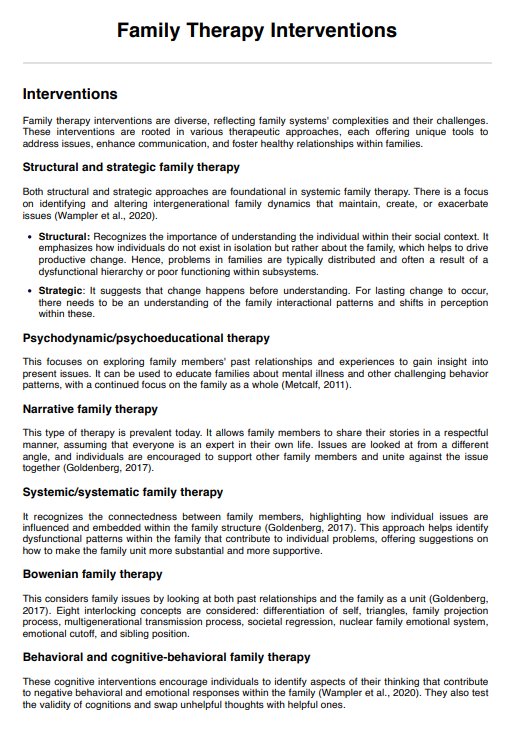Family therapy can address a wide range of issues, including mental health conditions, family conflict, and behavioral problems.

Family Therapy Interventions Handout
Learn various family therapy interventions and techniques. Download a free Family Therapy Interventions Handout here.
Use Template
Family Therapy Interventions Handout Template
Commonly asked questions
The duration of therapy varies depending on the family's needs and goals. Some see improvement in a few sessions, and others require longer-term engagement.
Yes, therapy for family intervention can be initiated by any family member who recognizes the need for professional help in addressing family issues.
EHR and practice management software
Get started for free
*No credit card required
Free
$0/usd
Unlimited clients
Telehealth
1GB of storage
Client portal text
Automated billing and online payments











